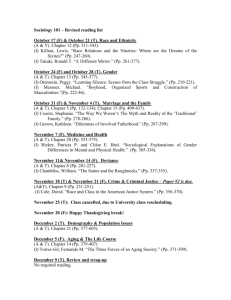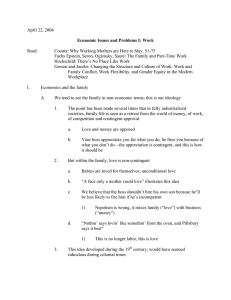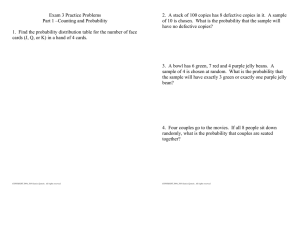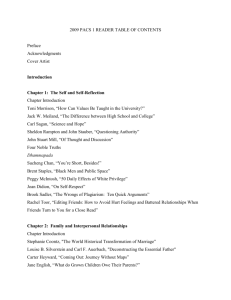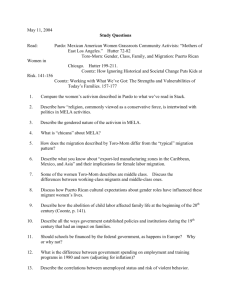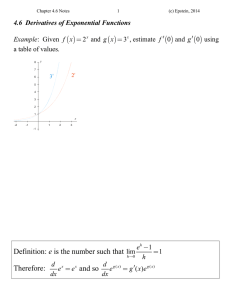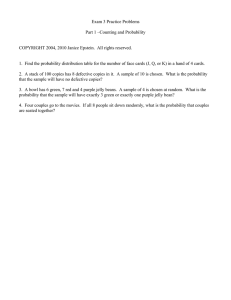April 22, 2004 Study Questions Read:
advertisement
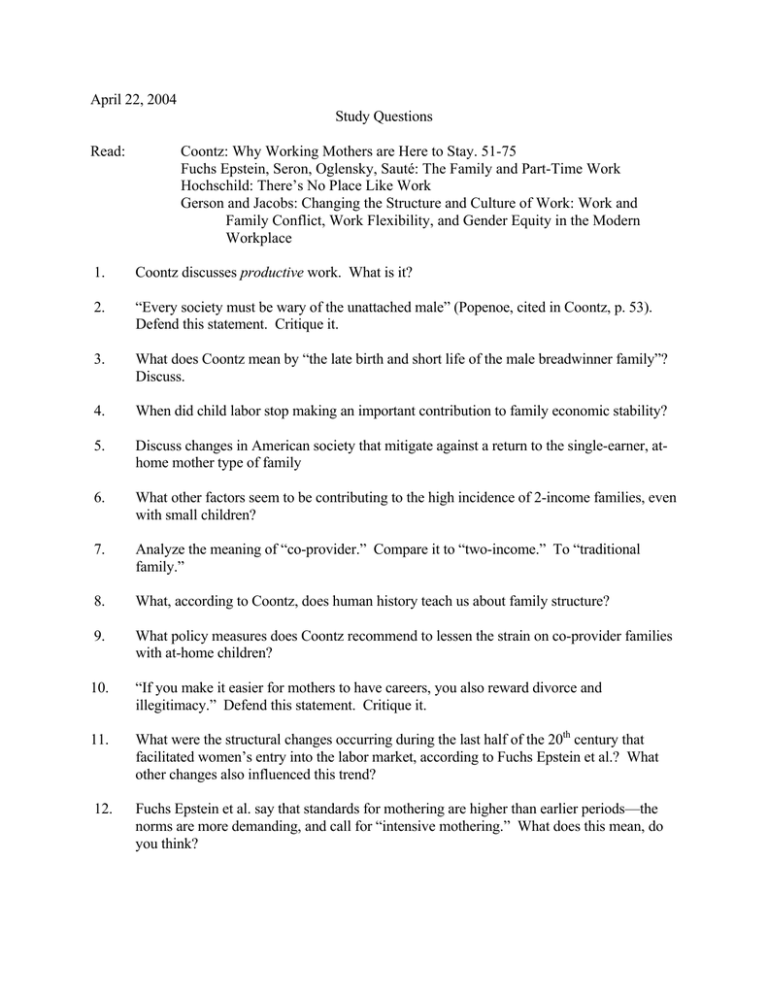
April 22, 2004 Study Questions Read: Coontz: Why Working Mothers are Here to Stay. 51-75 Fuchs Epstein, Seron, Oglensky, Sauté: The Family and Part-Time Work Hochschild: There’s No Place Like Work Gerson and Jacobs: Changing the Structure and Culture of Work: Work and Family Conflict, Work Flexibility, and Gender Equity in the Modern Workplace 1. Coontz discusses productive work. What is it? 2. “Every society must be wary of the unattached male” (Popenoe, cited in Coontz, p. 53). Defend this statement. Critique it. 3. What does Coontz mean by “the late birth and short life of the male breadwinner family”? Discuss. 4. When did child labor stop making an important contribution to family economic stability? 5. Discuss changes in American society that mitigate against a return to the single-earner, athome mother type of family 6. What other factors seem to be contributing to the high incidence of 2-income families, even with small children? 7. Analyze the meaning of “co-provider.” Compare it to “two-income.” To “traditional family.” 8. What, according to Coontz, does human history teach us about family structure? 9. What policy measures does Coontz recommend to lessen the strain on co-provider families with at-home children? 10. “If you make it easier for mothers to have careers, you also reward divorce and illegitimacy.” Defend this statement. Critique it. 11. What were the structural changes occurring during the last half of the 20th century that facilitated women’s entry into the labor market, according to Fuchs Epstein et al.? What other changes also influenced this trend? 12. Fuchs Epstein et al. say that standards for mothering are higher than earlier periods—the norms are more demanding, and call for “intensive mothering.” What does this mean, do you think? 13. What are the “positive effects on the family well-being of dual-career couples” we have read about? 14. Some of the lawyers Fuchs Epstein et al. interviewed are professional couples with substantial incomes. How do they represent what you want in your life later on? How do they not? 15. Many of the couples in the Fuchs Epstein et al. piece decided to “invest in the husband’s career.” What does this mean? What were the reasons these couples made this decision? 16. Discuss Hochschild’s points about time debt, the concept of quality time, and “Taylorizing” the house. 17. List as many differences in the analyses offered by today’s authors as you can. 18. Do you foresee yourself tempted to become a “workaholic”? Why or why not? 19. Describe the fears about “unspoken but very real costs” that workers who take advantage of family-friendly workplace policies may have to pay. (Gerson) 20. “Decades of research have consistently shown that satisfaction with work and good child care arrangements are the critical factors affecting the welfare of employed parents and their children.” (Gerson p. 7) Did reading this surprise you? Prior to reading it, what would you have said were the critical factors. 21. Men who work 50 or more hours per week report substantial increases in flexibility. This is not true for women. (p. 353) Why? MIT OpenCourseWare http://ocw.mit.edu 21A.230J / WGS.456J The Contemporary American Family Spring 2004 For information about citing these materials or our Terms of Use, visit: http://ocw.mit.edu/terms.
